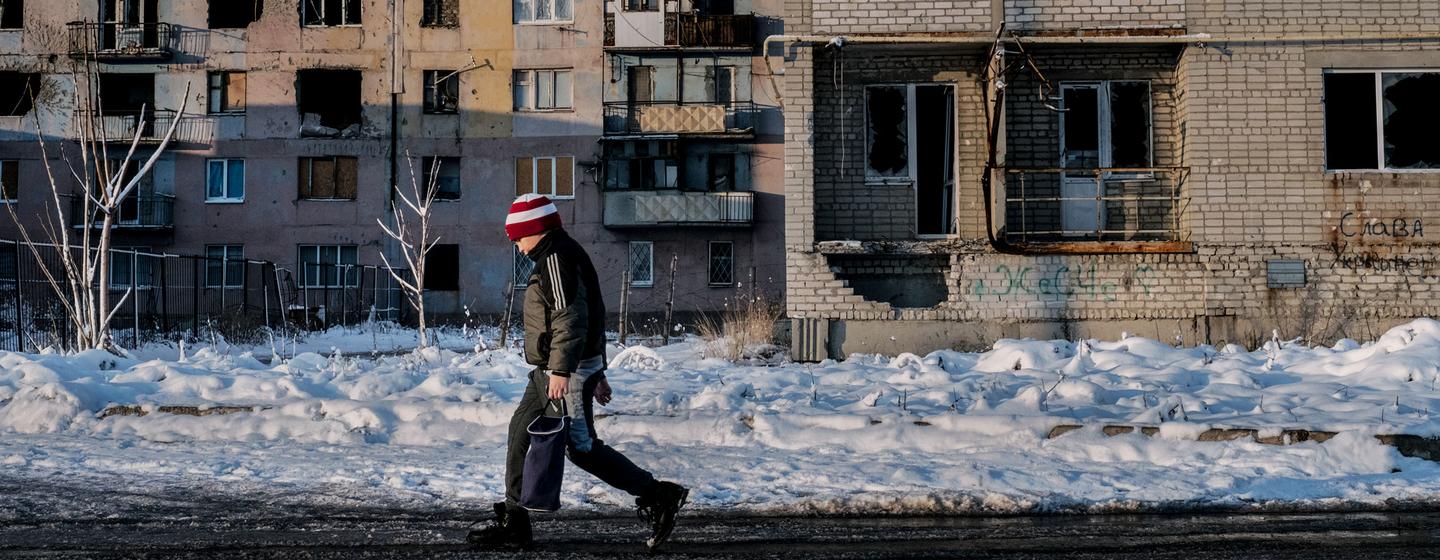Finding homes for more than a million displaced Ukrainians
Around 1.5 million Ukrainians have been forced from their homes since fighting in the far east of the country began in 2014. The UN and other humanitarian organizations are supporting those who have been displaced, as they try to adjust to their new lives.
When the conflict broke out between Government forces and mostly pro-Russian separatists, Yuri Zykov and his family were forced to leave their home in Horlivka, a town in the eastern Donbas region which came under heavy fire, and was badly damaged.
They headed to Vinnytsia, in central Ukraine, where Mr. Zykov found that local citizens were welcoming and happy to help. This made it easier for him, and the many others escaping the military conflict, to deal with one of the main challenges: finding a suitable place to live.

A permanent move
Opinion polls show that most of those who fled the fighting in the east, are not planning to return home, which presents a huge challenge to the authorities.
According to the Deputy Mayor of Vinnytsia, Galina Yakubovich, more than 4,000 families of temporarily displaced persons are registered in the city. “We try to help everyone, but the issue of housing is very difficult, so we are looking for different opportunities,” she explained.
Mr. Zykov decided to create "Common Cause", an organization for displaced people, aimed at dealing with the housing shortage.
The UN refugee agency (UNHCR) helped them to understand their rights, how to interact with the authorities, and ensure that their needs were taken into account in local social programmes.
Armed with this knowledge, they negotiated with the Vinnytsia local government to build a new building with 105 apartments, and were allocated a plot of land, and funds for the construction, which began a year ago, and is starting to take shape.
Crucially, the cost of the new apartments will be half the market price, putting them within reach of the affected families, many of whom would not otherwise be able to afford them.

‘Window of opportunity’
“In 2014, when we first got here, we were confused, and miserable”, says Mr. Zykov. “Now we have a window of opportunity. We received a warm welcome, and we are grateful to the city and all of the organizations and people who have helped us”.
The project in Vinnytsia is a first for Ukraine: a unique collaboration between the internally displaced people, the local community and city government authorities, and its success has made it possible to help others. Common Cause now plans to launch similar projects in 18 other regions of Ukraine.
In order to raise awareness of what had been achieved, UNHCR gathered representatives from cities around the country in Vinnytsia for the “Cities of Solidarity” forum, in October 2021.
“We know that displacement is a life-changing experience. In the early stages of displacement, people need assistance from their host communities and governments.” says Meghan Froener, UNHCR Head of External Relations. “This Forum represents an important symbol of solidarity between authorities and communities”.
UNHCR in Ukraine
- The United Nations Refugee Agency (UNHCR) has been helping provide services in Ukraine for 27 years.
- In particular, it offers assistance and advice to the Government of Ukraine, monitors the fulfilment of the State's international obligations regarding the protection of refugees, and provides assistance to the most vulnerable refugees, asylum seekers and internally displaced.

